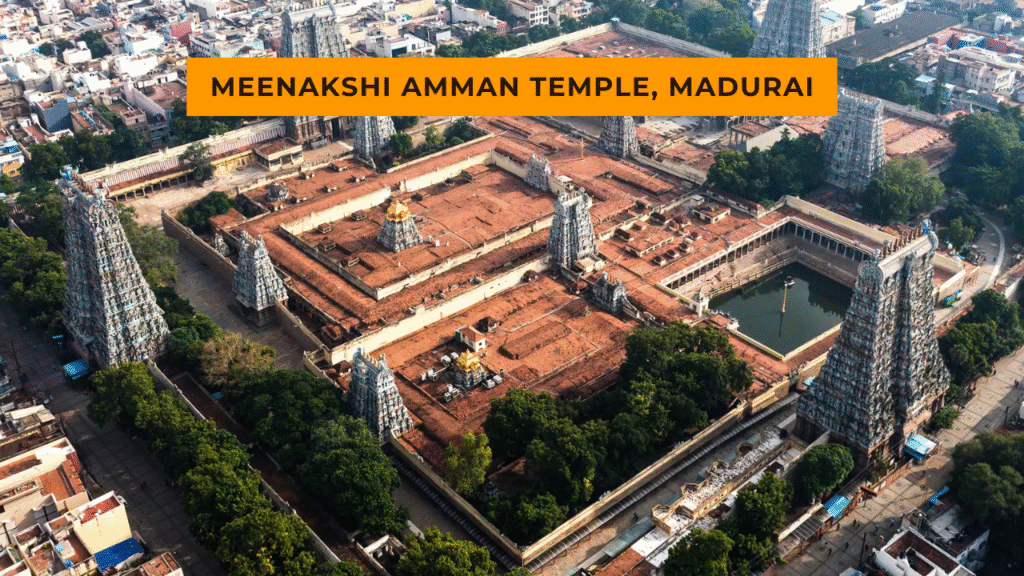Vaishno Devi Temple, nestled in the Trikuta Mountains of Jammu and Kashmir, is one of the most revered pilgrimage destinations in India. Every year, millions of devotees from across the country and the world undertake the sacred journey to seek the blessings of Mata Vaishno Devi, an embodiment of the Hindu goddess Durga. The journey is not only a spiritual experience but also a test of faith, endurance, and devotion.
| Temple Name | Vaishno Devi Temple |
| Location | Trikuta Hills, near Katra, Reasi district, Jammu & Kashmir |
| Main Deity | Mata Vaishno Devi (manifestation of Durga: Kali, Lakshmi & Saraswati) |
| Significance | One of the holiest Shakti Peethas in India; visited by millions annually |
| Trek Distance | Approx. 13 km from Katra to Bhawan (main temple) |
| Alternate Transport | Ponies, palanquins, battery cars, ropeway, and helicopter from Katra |
| Darshan Timings | 24×7 (Aarti 6–8 AM & 6–8 PM, limited to officials, viewable on screens) |
| Best Time to Visit | March to October; Navratri is peak season |
| Managed By | Shri Mata Vaishno Devi Shrine Board (SMVDSB) |
| Accommodation | Shrine Board rooms, guest houses, and private hotels in Katra & Bhawan |
| Nearby Places | Bhairavnath Temple, Patnitop, Shivkhori Temple |
| Essential Tips | ID proof required, comfortable shoes, pre-book in peak times, eco-awareness |
The Legend Behind Vaishno Devi
The origin of the temple is rooted in deep mythology. According to Hindu beliefs, Mata Vaishno Devi was born as a human girl named Vaishnavi, who meditated in the mountains to attain spiritual enlightenment. During her penance, she encountered Bhairavnath, a tantric who tried to pursue her. To escape, she took refuge in the Trikuta Hills. Eventually, she was forced to confront him and killed him at the entrance of a cave. Before his death, Bhairavnath sought forgiveness, and the goddess granted him salvation. His shrine now lies near the main temple and is considered part of the pilgrimage.
Location and Accessibility
The temple is located near Katra, a small town in Reasi district, approximately 50 km from Jammu city. Katra serves as the base for the trek to the shrine. Devotees can reach Katra by train, bus, or air. The newly developed Shri Mata Vaishno Devi Katra Railway Station connects to major cities, while Jammu Airport serves as the nearest airbase.
Once in Katra, pilgrims begin the 13 km uphill trek to the holy cave located at an altitude of about 5,200 feet. While many choose to walk the entire distance, there are other options like ponies, palanquins, battery-operated cars, and helicopter services for convenience.
The Pilgrimage Experience
The journey to the Vaishno Devi Bhawan (main temple) is an intense spiritual experience. Pilgrims chant “Jai Mata Di” as they ascend through the winding trails and tunnels surrounded by scenic views. The pathway is well-maintained, with shelters, clean drinking water, medical aid, and restrooms provided at regular intervals.
Along the way, pilgrims cross key points such as Banganga, where Mata Vaishno Devi is believed to have created a stream by striking the earth with her arrow, Charan Paduka, where her footprints are believed to be imprinted on a rock, and Ardhkuwari, a cave where she meditated for nine months.
The final destination, Vaishno Devi Temple, is a sacred cave where devotees worship three natural rock formations called Pindis, representing the three goddesses—Maha Kali, Maha Lakshmi, and Maha Saraswati.
Darshan Timings and Management
The temple is managed by the Shri Mata Vaishno Devi Shrine Board, which ensures round-the-clock security, cleanliness, and facilities for devotees. The darshan is available throughout the year, though it gets crowded during Navratri, New Year, and summer holidays.
| Day | Temple Darshan Timings |
|---|---|
| All Days | Open 24 Hours (in batches) |
| Aarti (Morning) | 6:00 AM – 8:00 AM |
| Aarti (Evening) | 6:00 PM – 8:00 PM |
Note: Aarti is only for board officials, but it can be viewed on LED screens or online.
Helicopter and VIP Darshan
For those unable to walk the distance or who prefer a quicker route, helicopter services are available from Katra to Sanjichhat, located 2.5 km from the Bhawan. Bookings can be done online via the official shrine board website. VIP Darshan passes can also be obtained, especially for elderly pilgrims or during off-peak seasons.
Best Time to Visit
While the temple is open all year, the best time to visit is during March to October, when the weather is pleasant and ideal for trekking. The Navratri festival is especially significant and draws large numbers of devotees. Winter months (November to February) can be cold and snowy, but the route remains open with the help of snow-clearing systems.
Accommodation Options
The shrine board offers accommodation options in Katra, Adhkuwari, and Bhawan at subsidized rates. These include dormitories, rooms, and guest houses. Private hotels and lodges are also available in Katra to suit all budgets.
Food and Other Facilities
Clean and hygienic canteens, bhojanalayas, and refreshment points are present all along the route. Langars (free food services) are occasionally organized during peak seasons and special festivals. Facilities like cloakrooms, shoe stands, and medical aid units ensure safety and comfort.
Nearby Attractions
Once you’ve completed the pilgrimage, you can explore nearby places like:
- Bhairavnath Temple: A must-visit, as the pilgrimage is incomplete without it.
- Patnitop: A beautiful hill station about 80 km from Katra.
- Shivkhori Cave Temple: Dedicated to Lord Shiva, located about 70 km from Katra.
Tips for Pilgrims
- Always carry identity proof, especially if you’ve booked services online.
- Wear comfortable shoes and carry warm clothing in winter.
- Avoid using plastic and help maintain the eco-sensitive zone.
- Try to pre-book accommodations and services during peak seasons.



